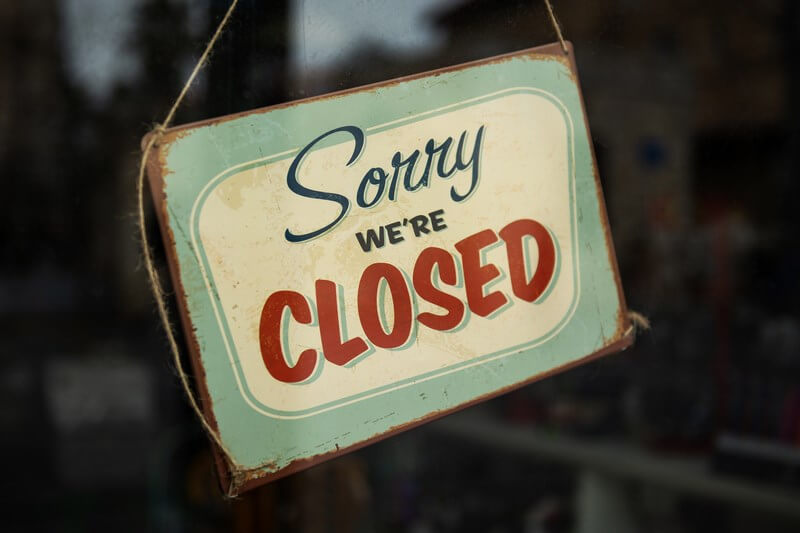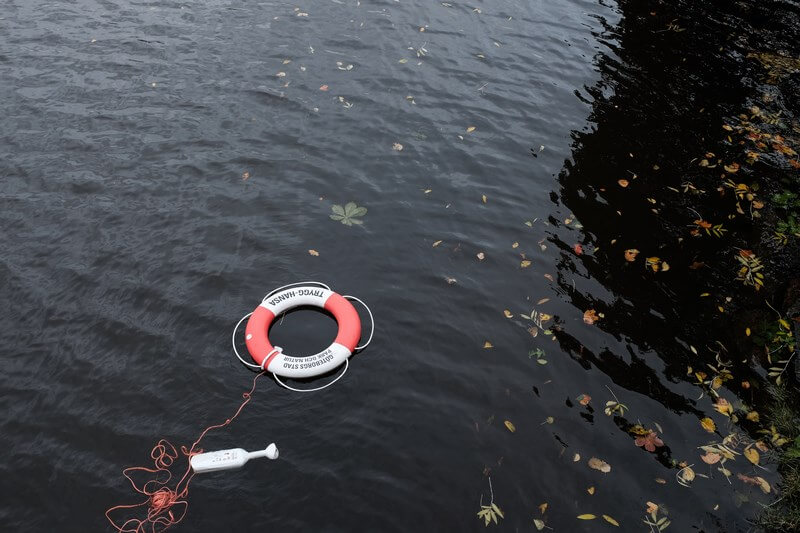
It's Here...My Halloween Blog!
It’s the Halloween blog. The reason why I love blogs with lists is that they somehow manage to identify all the awful, scary, and downright shocking facts about a topic! So, this is the perfect time of year to share statistics I discovered about business continuity planning and small businesses. The following list might make you think you’ve seen a ghost! If you’re curious about what the data says, check out the ten facts below.

#1 - FEMA, reports that 40% percent of small businesses never reopen their doors after a disaster
What a frightening statistic when you think about it! Imagine walking around your community and seeing 40% of the local businesses’ doors shut. As individuals, many of us can slowly rebuild our lives after a disaster. If there is a large-scale or unexpected event, a small business may not have the resources to recover.
The Small Business Admiration’s data is even more grim, warning that 90% of businesses that experience a business interruption close forever. There is no direct FEMA disaster relief for small, private companies. Although you can apply to FEMA for financial assistance, disaster relief is set up to help individuals or families, offering temporary housing and other expenses related to food, medicine, or clothing. Federal Assistance for small businesses comes in the form of low-interest loans. I am sure that you don’t want to be in the position of applying for disaster unemployment assistance yourself or having to layoff employees.

#2 - WCA Technologies estimated that the average cost of downtime due to a business interruption for small businesses at $8,000 to $74,000 per hour for SMBs
Few businesses can operate without technology or IT services like those offered by WCA. I know that many of you are savvy enough to know about backing up your data or using cloud services. What amazes me is how many businesses don’t invest in their IT infrastructure. Instead, they rely on outdated IT providers or untrained employees. To be successful, companies need to keep an up-to-date IT infrastructure. In today’s competitive environment, even businesses with less than 15 employees can hire IT consultants like Dragonfly Computers that specialize in providing enterprise-level support to small companies. If your business is online, you still need to operate somewhere physically.

#3 - According to analyst firm IDC, 70% of all successful attacks on computer networks are done by employees and insiders
A statistic like this one by IDC is both startling and sad at the same time. I am not naïve enough to think that there aren’t bad people out there. However, it is disheartening to realize that an employee is the one sabotaging your business. You are not always able to spot disgruntled or corrupt employees. As a small business owner, you do have a responsibility to protect your operation. It just makes sense to do everything you can to put security and disaster recovery planning in place.

#4 - A 2015 survey by Nationwide Insurance found that 75% of small businesses do not have a disaster plan in place and 52% estimate it would take at least three months to recover from a disaster
Having a documented continuity plan seems like an essential part of today’s business planning. So, it is incredible for me to realize that so many small businesses haven’t taken this step. I get that time and resources are an excuse, but they are just that. Taking into account that a recent Telstra Small Business Intelligence Report found that 50% of businesses don’t have a website and only 25% use SEO, it is not surprising that business owners are not investing in a disaster plan.
The other half of the stat is chilling. I can’t imagine that many businesses can afford 90 days of downtime. If you are a small business owner, ask yourself if you could survive a three-month leave of absence? Even if you could, do you think your customers will remain loyal? On YouTube, people are upset when their favorite influencer doesn’t post for a week. With this in mind, it makes the relatively small cost of engaging a consultant or creating a DIY plan worth it.
Think of the last time a vendor failed to provide you a service on time. If you are like me, you quickly start looking for alternatives. To remain in business, you need to stay relevant and accessible to your current and potential customers.

# 5 - 71% of small-business owners don’t have business interruption insurance. Often viewed as an added expense, it could increase your odds of survival
I’m not an insurance agent but recommend you engage with a local agent or online carrier. Insurance is an expense but a worthwhile one. I recognize that business owners want to keep costs low, but this investment makes sense. The National Association of Insurance Commissioners offers solid advice. I added a link to an article in the resource section that I encourage you to review. Having disaster insurance could make a difference to your business’ survival.
Let’s think about that FEMA disaster relief scenario again. FEMA disaster relief awards can take ten days on average to get deposited into a checking account. If you do apply for a Small Business Administration (SBA) loan, experts say it can take a long time to gather the required paperwork. Last, the approval process is reliant on the financial lender’s timeline, and they often get inundated after an event with loan requests. You can expect the process to take 60 to 90 days.

#6 - A Touche Ross study stated that the survival rate for companies without a disaster recovery plan is less than 10%!
Having a business continuity plan to recover from a crisis event is essential, but so is making sure it has a disaster recovery (DR) component. If you don’t include it in your overall emergency planning, a standalone DR plan is a must. The Tech Target site has some useful resources to get you started if you don’t have anything in place.
Remember that help from the government comes in the form of essential life resources only. You can’t expect FEMA disaster relief to help you due to a system, hardware failure, or cyberattack. Contrary to popular belief, the goal of federal assistance is never to make you or your business whole again. It is only designed to provide temporary aid you in getting back on to your feet.

#7 - 21% of small-business owners without a documented disaster plan said they don’t have one because it’s not a high priority
Just like the clown above, it’s scary to think that small businesses neglect to have plans in place. I get that people think they are sole proprietors or are not big enough to need one. People underestimate their ability to recover on their own without having a documented recovery process. It is possible to ad-hoc things after a crisis, but if you think about it logically, few of us do well when we half-ass something we haven’t thought through. No amount of assistance can help recover from a failure to plan. It’s much faster and efficient to recover with a planned-out process, which is all a business continuity plan is.

#8 - Hardware failure is the number one cause of unplanned downtime, followed by power failures (35%)
The average lifespan of a laptop is three to five years, so you should upgrade your hardware regularly. With even large corporations moving to the Cloud, you should investigate server and file support in this area. Make sure you get good technology advice from a reputable source. There are IT providers out that can provide you with enterprise-level service at a reasonable price. If you are interested, I can connect you to a local IT consultant in my area, private message me.
Another significant issue is power failures. Too few companies invest in generators or power back-ups. There are many options, and it only takes a little research to learn how to power your office, home, and even cell-phone when the power goes out. Most solutions are temporary fixes, but some additional time is better than none. Resources I tested are usually enough to last me until the power comes back on. Recent data says the US is suffering increased and worsening power grid failures, so you want to be ready.
This site lists power outages across the US in real-time.

#9 - Over 50% of companies experienced a downtime event in the past five years that lasted longer than a full workday.
Everyone likes to have a day off from work now and again. It’s not so great when your business closes due to an unplanned outage. To get a sense of this, ask yourself how much productivity and lost revenue you could suffer from a full day’s unexpected work stoppage or longer. There’s no amount of FEMA disaster relief or insurance coverage that can make up for lost time or opportunities.

#10 - More than 50% of businesses have been the target of cyber-attacks. 20% of those attacks are due to ransomware.
Some small business owners believe that because they aren’t at risk for cyber events. 60% of Malware attacks are on small businesses, and the number of cyber-attacks reported was up in 2017. 93% of attacks are delivered by email, so having good security awareness and training is the key to preventing cyber events. Many people mistakenly believe cybercriminals are not interested in small businesses, but the opposite is true. Criminals are looking for opportunities and vulnerabilities. Since they are often looking for sensitive customer data, it doesn’t matter to them where they get it from, a large company or small.
Generally, most small businesses fail to protect critical information as well as they could. There is a successful ransomware attack every 14 seconds, and that is a bone-chilling thought. Last year, cyber events cost small and medium-sized businesses over $1 million each in lost revenue and IT assets.

Your Business Doesn't Have to be a Scary Story
After reading these frightening stats, you can see why failing to have a plan in place could be fatal—to your business. Don’t let these stats scare you. You can prepare for crisis events to help your business recover quickly. Luckily, there is help available to update your existing business continuity plan or get you started.
The good news is the business continuity planning doesn’t have to be costly or overly complicated. If you want to read about related topics, I encourage you to read my blogs, California Earthquakes – All Disasters Are Local and Unplanned Disaster Events: Tornadoes And Sharks. If you enjoyed this blog, let me know in the comments below.

Disaster Planning Resources aka Treats!
Hurricane alert: 40 percent of small businesses never recover from a disaster
Most Small Business Owners at Risk for a Disaster
What is the True Cost of Downtime for SMBs?
Protecting Your Businesses (FEMA) – link to information on FEMA’s mitigation and insurance programs
By the Numbers: Improve on 2017 Disaster Recovery Practices
The business continuity landscape in HD – BCI Horizon Scan 2017
Small Business Administration Ramps Up Its Disaster Assistance Program
Properly Insure Your Small Business for Natural Disaster
